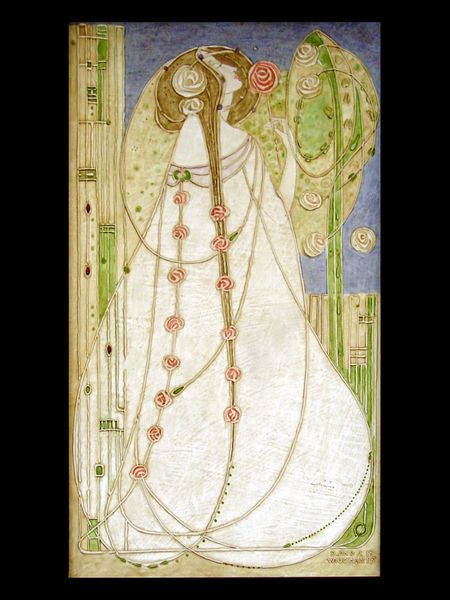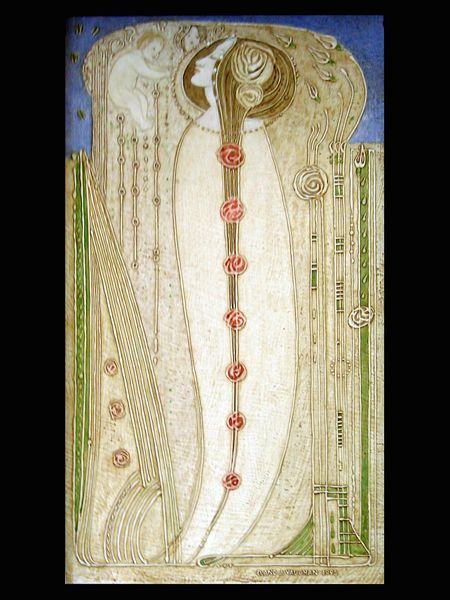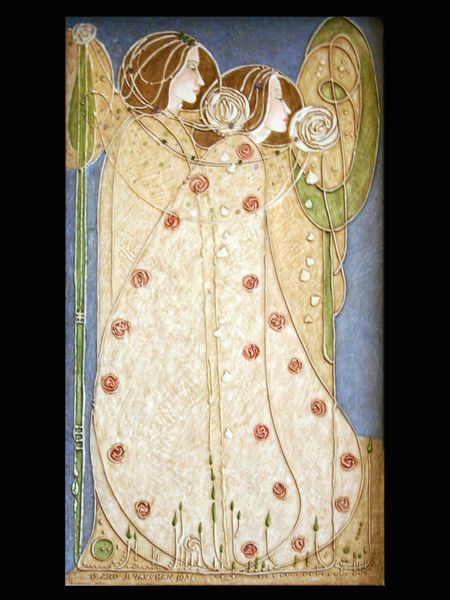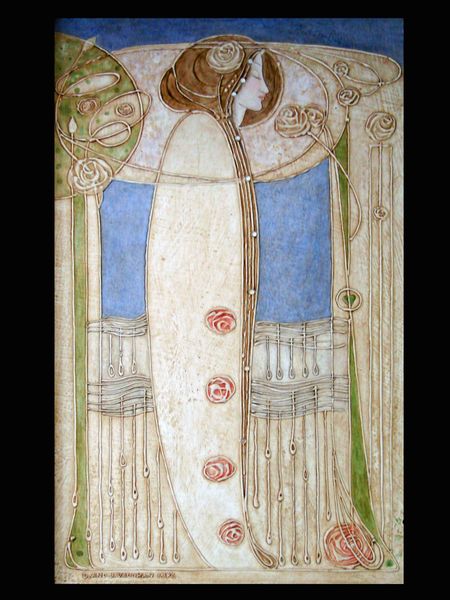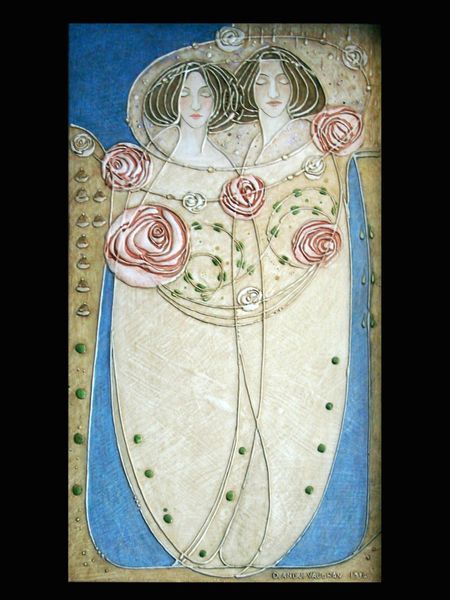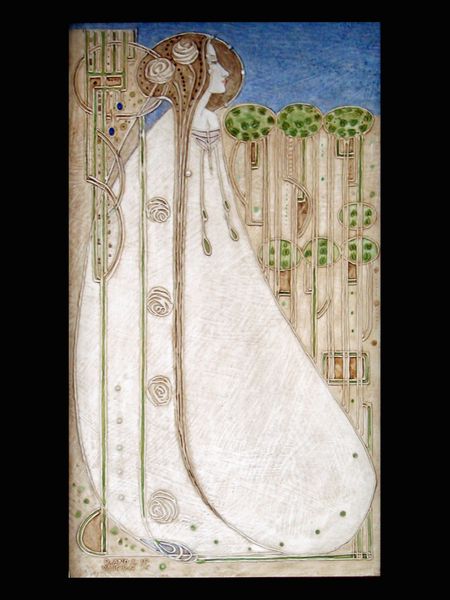
drawing
#
portrait
#
drawing
#
organic
#
art-nouveau
#
geometric composition
#
glasgow-school
#
line
#
symbolism
#
decorative-art
#
decorative art
Copyright: Public domain
Curator: Let's discuss Charles Rennie Mackintosh's "Décor de la salle à manger," created in 1901 as part of his designs for the House for an Art Lover in Glasgow. Editor: My first thought? Serenity. There's such a quiet, almost ethereal feeling here. The composition is very linear, drawing your eye upward along that central figure, like watching vines climb a trellis. It's soothing somehow. Curator: Absolutely. Mackintosh’s Art Nouveau style here speaks to broader themes of organicism and symbolism prevalent at the time. Note how the feminine figure, with her elongated form and flowing hair, is almost indistinguishable from the plant-like motifs that surround her. Editor: Yes! It's like she’s blooming! And those teardrop shapes dotting her dress, it’s all interconnected—water, growth, woman. A celebration of nature. Makes me wonder about the role of women in the Art Nouveau movement, too. Curator: The piece also resonates with ideas about the "New Woman" emerging at the turn of the century, often associated with artistic creativity and a renewed connection to nature. This decor actively positions the feminine form as a site of creation and inspiration. Also, consider the deliberate geometrical nature—it feels almost a pushback from purely organic interpretation. Editor: Right, it’s balanced, but the softness softens the geometric forms. And there’s this delicate tension there, which makes me ponder the intended dining experience! A room designed for contemplating our place in nature, perhaps? Curator: Precisely. It invites us to reflect on our relationship to both the natural world and to ourselves as gendered subjects within society. It asks, or rather implores, that we question these inherent associations, and how we value those distinctions in everyday experience. Editor: I like how he is also drawing the outside in with decorative and purposeful lines—all the organic shapes contained carefully within geometric boxes, within the decorative rectangular of this 'drawing', very nice. Well, looking at this piece now, I just feel a renewed appreciation for how much visual intention went into what was once functional interior design. Curator: I'm struck again by the artwork's powerful blend of visual aesthetics and philosophical ideas. Thank you for sharing your own fresh perspective.
Comments
No comments
Be the first to comment and join the conversation on the ultimate creative platform.


